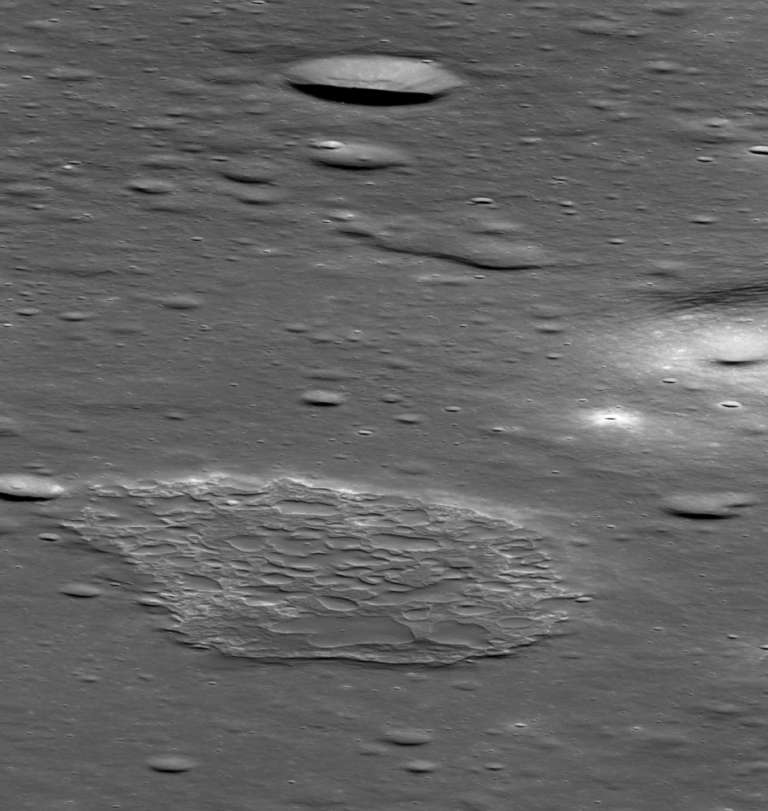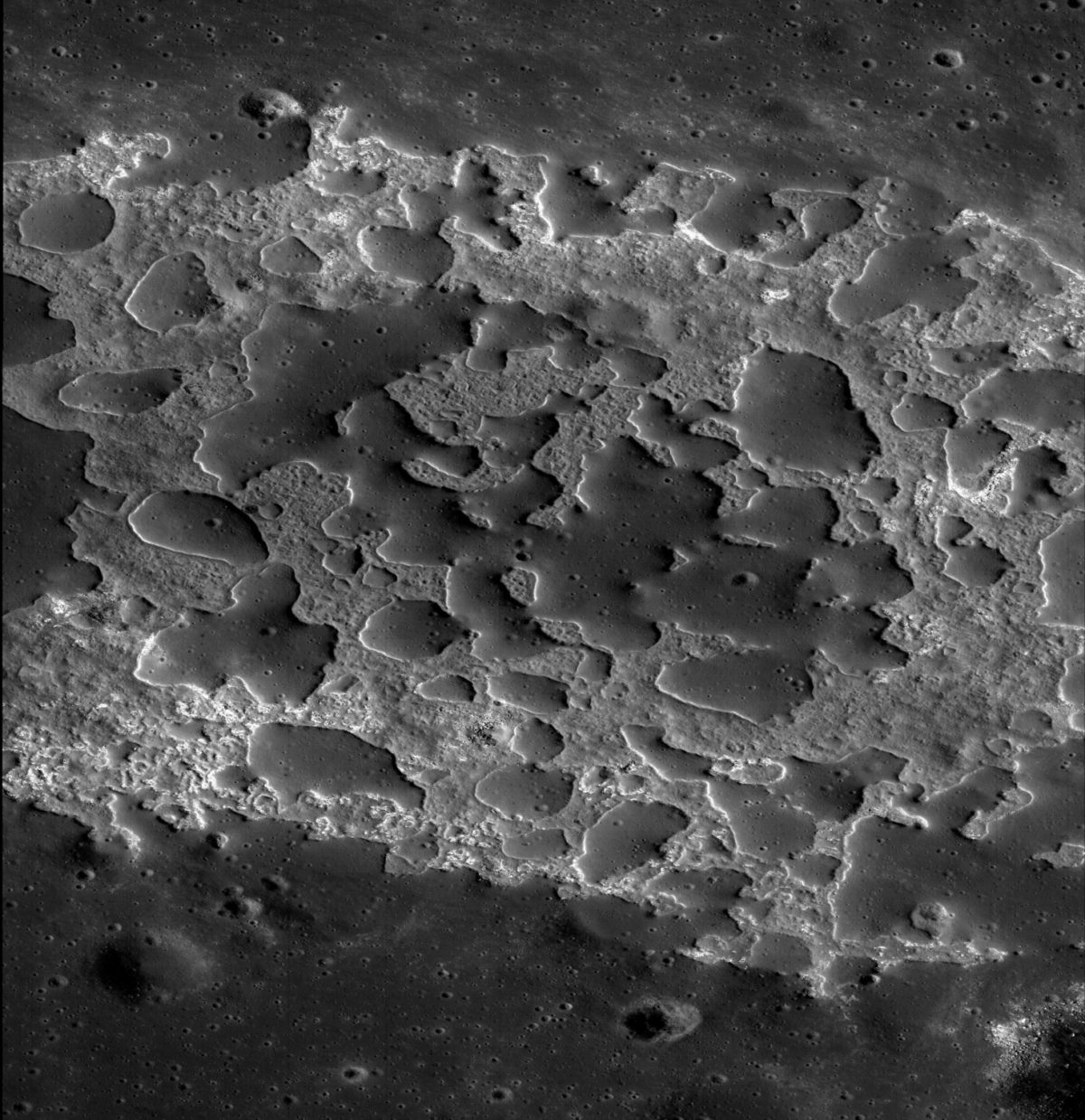Bill Dunford • Oct 21, 2013
The Strangest Place on the Moon?
It's always rewarding to wander the surface of the Moon using the archive of images captured by the Lunar Reconnaissance Orbiter. It's full of pictures that show off the Moon's stark beauty, pictures so sharp you can see right down to individual boulders on the surface. Exploring the craters, ridges, and rilles seen in the archive usually elicits a "Nice" or sometimes even a "Wow!"
It's more unusual to find a "What the hell is that?"
But that's what I said when I stumbled across this recent view of Lacus Felicitatis (the "Lake of Happiness"). There's a D-shaped depression about two kilometers wide and 30 meters deep. It's filled with domes of smooth, dark material rising above rough, mostly crater-less light material. Its features look unusually sharp (and therefore probably relatively young).

I discovered I wasn't the first one to notice this place. Apollo astronauts took note and photographed it from orbit. The feature came to be known as Ina.
Then in the 1990s pictures from the Clementine spacecraft showed that Ina's colors resembled those of very young impact craters, although Ina is definitely not that kind of crater.
More recently, scientists looked at the best available pictures of Ina, and noted a relative lack of impact craters in the low-lying, light materials. They decided it must be very young. They concluded that Ina is a volcanic feature, the caldera of a low shield volcano, and speculated that perhaps it's a site where—even today—gasses from deep underground might be escaping. Such outgassing events could even be the source of the mysterious flashes of light that amateur astronomers report seeing on the lunar surface from time to time.
Then the Lunar Reconnaissance Orbiter sent down even sharper pictures, up to ten times sharper, like this one. As happens so often in science, the new information raised more questions than it answered.

Lunar explorers saw that while the lighter material is indeed probably younger that the blobs of darker material, it's not without craters of its own, and may not be all that much younger than the surrounding plains. Rather than places where the ground collapsed, as in an earthly caldera, the lighter areas may be thick lava that flowed between the dark mounds.
We know the Moon better than any other place outside Earth. The strange topography of Ina, however, serves as a reminder that the Moon still guards some of its most interesting secrets.
Support our core enterprises
Your support powers our mission to explore worlds, find life, and defend Earth. You make all the difference when you make a gift. Give today!
Donate

 Explore Worlds
Explore Worlds Find Life
Find Life Defend Earth
Defend Earth

